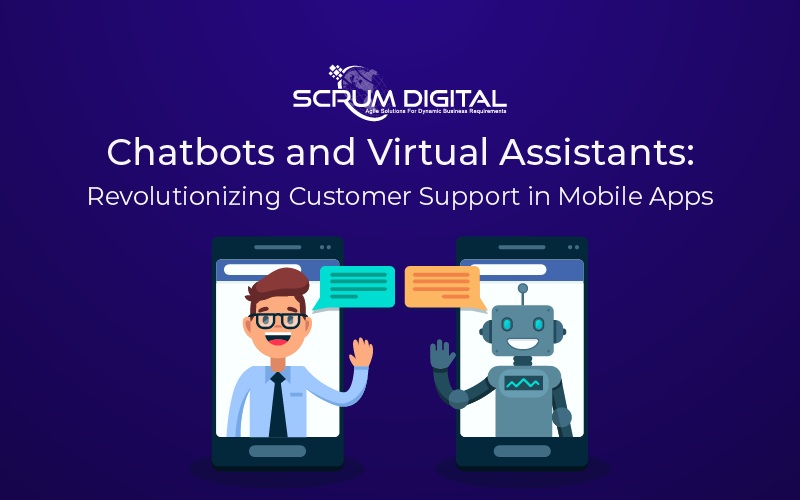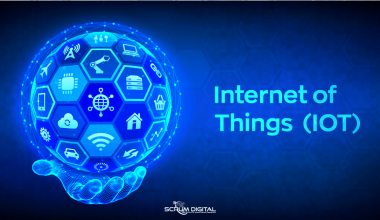In the dynamic sphere of mobile app development services, the integration of chatbots and virtual assistants has emerged as a game-changer.
These AI-powered tools are transforming how businesses interact with their customers, offering a blend of efficiency, personalization, and accessibility.
This evolution marks a significant leap, especially in the context of application development services in the USA, where customer expectations are continually escalating.
Understanding the Role of AI in Customer Support
1. Natural Language Processing (NLP)
AI uses sophisticated algorithms to decode human language, enabling chatbots to understand slang, idioms, and even misspelled words. This technology is crucial in bridging the communication gap between machines and humans.
2. Machine Learning
This aspect of AI allows chatbots to learn from each interaction. Over time, they become more adept at handling complex queries, learning from past mistakes, and even anticipating user needs based on historical data.
3. Predictive Analytics
By analyzing past customer behavior and preferences, AI can offer personalized suggestions and solutions. This capability is particularly useful in e-commerce, where chatbots can recommend products that a customer is likely to purchase.
4. Emotion Recognition
Advanced AI can analyze text for emotional cues, allowing chatbots to adjust their responses to fit the mood of the customer. This feature is vital for maintaining a positive customer experience, especially in sensitive situations.
Why Chatbots are a Win-Win for Businesses and Customers?

1. Enhanced Customer Engagement
Chatbots not only provide instant responses but also maintain a conversational tone, making interactions more engaging for users.
They can handle routine queries, freeing up human agents to tackle more complex issues, thus improving overall service quality. Additionally, chatbots can push notifications and updates, keeping users informed and engaged with the app.
2. Cost Efficiency
By automating the bulk of customer inquiries, chatbots significantly reduce the need for a large customer service team.
This automation leads to a decrease in operational costs. Furthermore, chatbots minimize human errors, which can be costly to rectify. Over time, these savings can be substantial, particularly for startups and small businesses looking to optimize their resources.
3. Scalability
Chatbots are designed to handle an increase in queries without the need for proportional increases in resources.
This scalability ensures that businesses can maintain a consistent level of service during peak times, such as holidays or product launches, without incurring additional costs or strain on human resources.
4. Personalized Experience
Modern chatbots are adept at gathering and analyzing user data, enabling them to offer personalized recommendations and solutions.
This personalization can range from suggesting products based on previous purchases to reminding users about unfinished tasks in the app. Personalization not only enhances the user experience but also drives engagement and loyalty.
5. Global Reach and Language Support
Chatbots can be programmed to support multiple languages, making them an ideal tool for global businesses.
This multilingual capability expands a company’s reach and ensures that users from different linguistic backgrounds can receive support in their preferred language.
6. Data Collection and Analytics
Chatbots gather valuable data with every interaction, which can be analyzed to gain insights into customer preferences and behavior.
This data can inform business strategies, product development, and marketing campaigns, making the chatbots an invaluable tool for continuous improvement.
7. 24/7 Availability
Unlike human agents, chatbots are available around the clock. This constant availability ensures that customers can get support whenever they need it, improving the overall customer experience and satisfaction. For businesses, this means being able to offer customer support without the constraints of time zones or working hours.
8. Integration and Automation
Chatbots can be integrated with various business systems like CRM, ERP, and databases, allowing for a seamless flow of information.
This integration enables chatbots to automate tasks like booking appointments, processing orders, and providing customized reports, further enhancing efficiency and user experience.
The Impact on Mobile App Development Services

1. User Experience Focus
With AI, the emphasis is on creating intuitive and engaging user interfaces that can converse naturally with users. This focus enhances user satisfaction and app usability.
2. Customization Opportunities
Developers can now tailor chatbots to specific business needs, whether it’s for a niche market or a particular type of customer interaction, ensuring that the chatbot aligns perfectly with the app’s purpose.
3. Cross Platform Integration
AI chatbots are being designed to work across iOS, Android, and web applications, offering a consistent experience regardless of the platform.
4. Continuous Improvements and Updates
Regular updates powered by AI insights help in refining app features, including chatbot interactions, ensuring that the app stays relevant and effective.
Application Development Services in USA: A Hotspot for Innovation
1. Technological Advancements
The USA is home to cutting-edge research in AI, leading to more sophisticated and efficient chatbot solutions.
2. Diverse Industry Adoption
American companies across sectors are rapidly adopting chatbots, serving as a testbed for diverse applications, from customer service to mental health support.
3. Strong Investment and Research
The U.S. sees significant funding in AI, both from private and government sources, fueling research and development in this field.
4. Collaboration with Academia
Partnerships between tech companies and universities foster innovation, with academic research often translating into practical, marketable AI applications.
Real World Applications: Where Chatbots are Making a Difference
1. Customer Service
Chatbots handle everything from answering FAQs to managing returns and exchanges, significantly reducing response times and improving customer satisfaction.
2. Healthcare
Beyond scheduling and reminders, chatbots in healthcare provide preliminary health assessments, direct patients to the appropriate care, and offer mental health support through conversational therapy.
3. Banking
Chatbots assist with secure transactions, fraud alerts, and financial planning advice, making banking more accessible and efficient.
4. Retail and E-Commerce
They help guide customers through the buying process, providing personalized shopping experiences, and managing loyalty programs.
5. Travel and Hospitality
Chatbots enhance the travel experience by offering real-time travel updates, personalized trip planning, and efficient handling of customer requests and complaints.
Challenges and Future Directions

1. Advancing Contextual Understanding
Challenge: Chatbots often struggle with understanding the context and history of conversations, which can lead to irrelevant responses.
Future Direction: Development of more advanced context-aware algorithms that can track and analyze the entire conversation history for more coherent and relevant interactions.
2. Improving Security and Data Privacy
Challenge: With the increasing use of chatbots, concerns around data privacy and security are growing, especially when handling sensitive information.
Future Direction: Implementation of stricter data encryption methods and adherence to international data protection regulations to build trust and ensure privacy.
3. Seamless Human-to-Bot Handoff
Challenge: Transitioning a conversation from a chatbot to a human agent without losing context or decreasing customer satisfaction remains a hurdle.
Future Direction: Development of more sophisticated handoff protocols and systems that enable smooth transitions, ensuring customer queries are resolved without frustration.
4. Developing Multimodal Capabilities
Challenge: Current chatbots are primarily text-based and cannot interact through other modalities like voice or visuals.
Future Direction: Integration of voice recognition and computer vision capabilities, enabling users to interact with chatbots more naturally and intuitively.
5. Cross-Domain Knowledge Enhancement
Challenge: Chatbots are often limited to specific domains or areas of knowledge, restricting their utility.
Future Direction: Expanding AI knowledge bases and learning capabilities to enable chatbots to assist in various domains, enhancing their versatility.
How Scrum Can Help You?
In the journey of integrating chatbots into mobile apps, the Scrum methodology, as advocated by Scrum Digital, plays a crucial role. Scrum, an agile framework, facilitates teams in managing complex software development projects with ease and flexibility. Here’s how Scrum can benefit from this integration:
1. Iterative Development
Scrum allows for continuous feedback and improvements, ensuring that the chatbot aligns perfectly with user needs and business goals.
2. Flexibility and Adaptability
The Scrum framework is adaptable, making it easier to incorporate new AI advancements into chatbot functionalities.
3. Cross-Functional Collaboration
Scrum encourages collaboration among developers, AI specialists, and business stakeholders, leading to more innovative and effective solutions.
Conclusion
The integration of chatbots and virtual assistants in mobile apps is not just a trend but a fundamental shift in how businesses approach customer support.
With the expertise of an AI chatbot development company, the strategic approach of mobile app development services, and the innovative spirit of application development services in the USA, this technology is set to redefine user experience and business efficiency.
As AI continues to evolve, the potential of chatbots in enhancing customer support is limitless, making them an indispensable tool in the digital age.



1 comment
Future challenging data